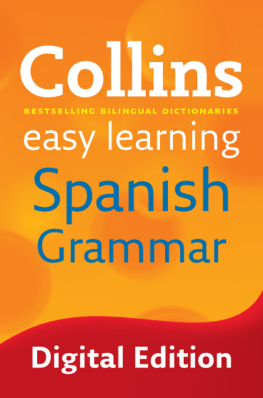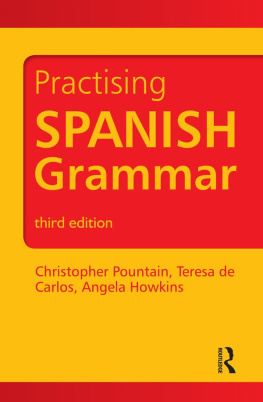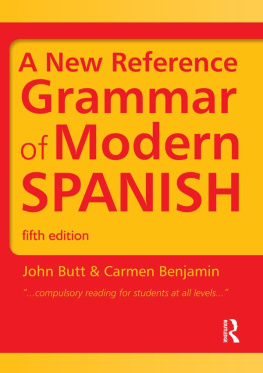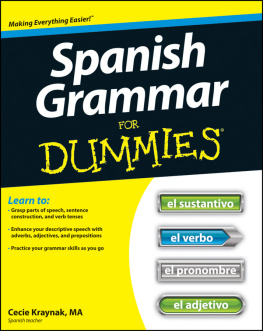
 Copyright 2012 by The McGraw-Hill Companies, Inc. All rights reserved. Except as permitted under the United States Copyright Act of 1976, no part of this publication may be reproduced or distributed in any form or by any means, or stored in a database or retrieval system, without the prior written permission of the publisher. ISBN: 978-0-07-178862-5
Copyright 2012 by The McGraw-Hill Companies, Inc. All rights reserved. Except as permitted under the United States Copyright Act of 1976, no part of this publication may be reproduced or distributed in any form or by any means, or stored in a database or retrieval system, without the prior written permission of the publisher. ISBN: 978-0-07-178862-5
MHID: 0-07-178862-X The material in this eBook also appears in the print version of this title: ISBN: 978-0-07-178861-8, MHID: 0-07-178861-1. All trademarks are trademarks of their respective owners. Rather than put a trademark symbol after every occurrence of a trademarked name, we use names in an editorial fashion only, and to the benefit of the trademark owner, with no intention of infringement of the trademark.
Where such designations appear in this book, they have been printed with initial caps. McGraw-Hill eBooks are available at special quantity discounts to use as premiums and sales promotions, or for use in corporate training programs. To contact a representative please e-mail us at bulksales@mcgraw-hill.com. TERMS OF USE This is a copyrighted work and The McGraw-Hill Companies, Inc. (McGraw-Hill) and its licensors reserve all rights in and to the work. Use of this work is subject to these terms.
Except as permitted under the Copyright Act of 1976 and the right to store and retrieve one copy of the work, you may not decompile, disassemble, reverse engineer, reproduce, modify, create derivative works based upon, transmit, distribute, disseminate, sell, publish or sublicense the work or any part of it without McGraw-Hills prior consent. You may use the work for your own noncommercial and personal use; any other use of the work is strictly prohibited. Your right to use the work may be terminated if you fail to comply with these terms. THE WORK IS PROVIDED AS IS. McGRAW-HILL AND ITS LICENSORS MAKE NO GUARANTEES OR WARRANTIES AS TO THE ACCURACY, ADEQUACY OR COMPLETENESS OF OR RESULTS TO BE OBTAINED FROM USING THE WORK, INCLUDING ANY INFORMATION THAT CAN BE ACCESSED THROUGH THE WORK VIA HYPERLINK OR OTHERWISE, AND EXPRESSLY DISCLAIM ANY WARRANTY, EXPRESS OR IMPLIED, INCLUDING BUT NOT LIMITED TO IMPLIED WARRANTIES OF MERCHANTABILITY OR FITNESS FOR A PARTICULAR PURPOSE. McGraw-Hill and its licensors do not warrant or guarantee that the functions contained in the work will meet your requirements or that its operation will be uninterrupted or error free.
Neither McGraw-Hill nor its licensors shall be liable to you or anyone else for any inaccuracy, error or omission, regardless of cause, in the work or for any damages resulting therefrom. McGraw-Hill has no responsibility for the content of any information accessed through the work. Under no circumstances shall McGraw-Hill and/or its licensors be liable for any indirect, incidental, special, punitive, consequential or similar damages that result from the use of or inability to use the work, even if any of them has been advised of the possibility of such damages. This limitation of liability shall apply to any claim or cause whatsoever whether such claim or cause arises in contract, tort or otherwise.
Contents
Preface
Side by Side Spanish & English Grammar presents the essential elements of Spanish grammarusually covered in a high school program or in the first year of college Spanishside by side with their English counterparts.
Side by Side Spanish & English Grammar has been used in both high school and college Spanish classes, and even in some English classes for a few students who were having trouble in understanding their English grammar text.
Side by Side Spanish & English Grammar has been used in both high school and college Spanish classes, and even in some English classes for a few students who were having trouble in understanding their English grammar text.
Its vocabulary is, for the most part, limited to the most frequently used Spanish words. It has been used as 1. a reference book for beginning students, for whom the standard works are too complex to be useful. This allows students a means for independent inquiry. 2. 3. a means of helping a student in a new school catch up with the class. 4. a means of organizing or summarizing material presented in the primary text, especially for students whose learning style favors an organized approach. 5. a means of providing a common background for talking about language with students who have studied English in different ways, so that their study of Spanish will show them something about how language works, one of the expectations of many college language requirements. 6. an alternative method of explaining grammatical points in both English and Spanish to relieve the classroom teacher of the task. an alternative method of explaining grammatical points in both English and Spanish to relieve the classroom teacher of the task.
Special features of the book that students will find useful include 1. a standard format that introduces each part of speech and answers the most common questions about it. 2. Quick Check charts that allow students to express themselves with more confidence, since they can independently check their sentences against a model. 3. 4. an exercise section that tests understanding of the main grammatical areas covered in the book, plus Using your Spanish, a section new to this edition, that prepares students for communication in Spanish. an exercise section that tests understanding of the main grammatical areas covered in the book, plus Using your Spanish, a section new to this edition, that prepares students for communication in Spanish.
We hope that this text will provide ways for students to increase their independent work and to adapt material to their own learning styles and situations.
Acknowledgments
I remain thankful, as I know my late wife, Edith R. Farrell, would, to our colleague, formerly at the University of Minnesota, Morris: Dr. Stacy Parker Aronson, who read the manuscript of this book; and David Stillman, who compiled the exercise section. Preliminary studies on which
Side by Side French & English Grammar, the companion volume of this book, was based were supported in part by a grant from the Educational Development Program of the University of Minnesota.
Introduction
This book grew out of a series of supplements to a Spanish grammar text.
Its purpose is to help you learn Spanish more easily. Many students have had trouble with foreign languages because they have not looked carefully enough, or critically enough, at their own. Struggles with your own language took place at such an early age that you have forgotten the times when it seemed difficult. Now it seems perfectly natural to you, and it is hard to adapt to different ways of expressing ideas. The material in this book has been classified and arranged to show you English and your new language side by side. You may be surprised at how many grammatical elements are similar in the two languages.
Information that is the same for both English and Spanish is usually not repeated on facing pages. If you find that a section is omitted under the Spanish, look to your left and find it on the English page. The English meaning of a Spanish example is usually on the left-hand page, too. Why grammar? People can speak, read, or write their native language, at least to a reasonable degree, without studying formal grammar (the rules governing how we say, change, and arrange words to express our ideas). Just by being around other speakers, we hear millions of examples, and the patterns we hear become a part of us. Even babies start with correct basic patterns (subject-verb-object), even though words may be missing or incorrect: Me wants cookie! Knowledge of grammar helps a great deal, though, in testing new and more complex words or patterns and in analyzing ones writing to discover where a sentence went wrong or how it could be more effective.
Next page








 Copyright 2012 by The McGraw-Hill Companies, Inc. All rights reserved. Except as permitted under the United States Copyright Act of 1976, no part of this publication may be reproduced or distributed in any form or by any means, or stored in a database or retrieval system, without the prior written permission of the publisher. ISBN: 978-0-07-178862-5
Copyright 2012 by The McGraw-Hill Companies, Inc. All rights reserved. Except as permitted under the United States Copyright Act of 1976, no part of this publication may be reproduced or distributed in any form or by any means, or stored in a database or retrieval system, without the prior written permission of the publisher. ISBN: 978-0-07-178862-5